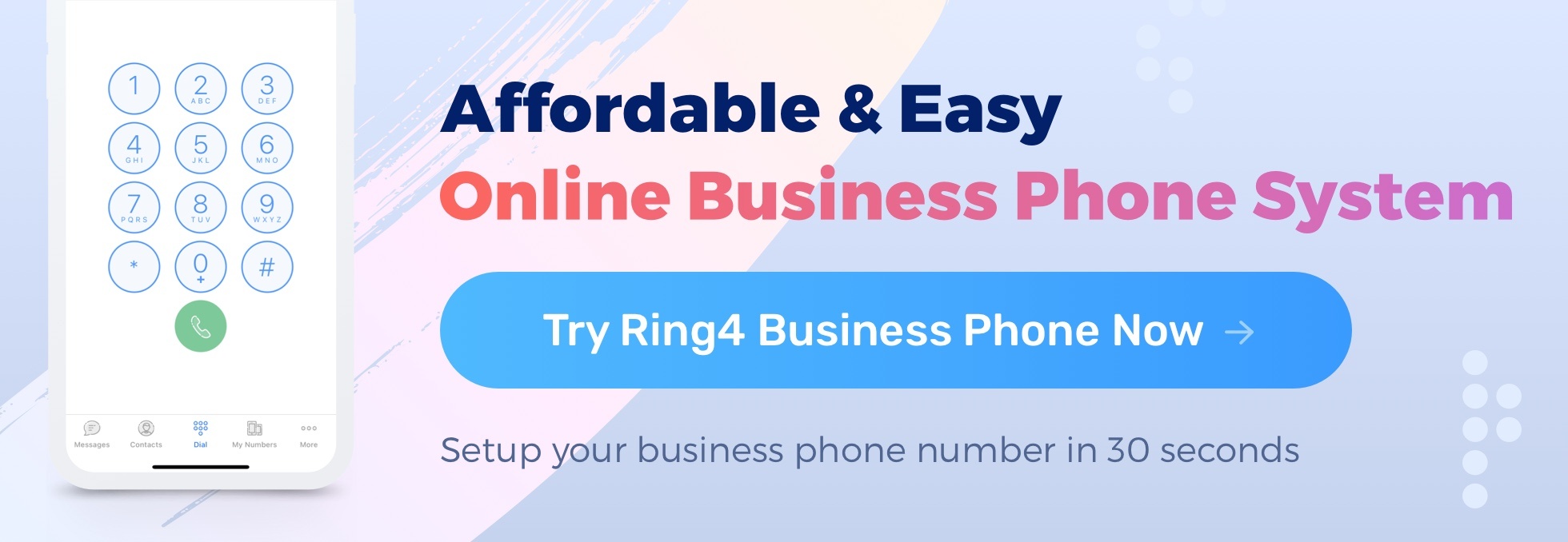Communication is not just about the message; it’s also about the form and the channel. Nowhere is this as obvious as in the business world. It’s not just about what you have to say something; it’s about where you say it.
Sure, you may have an insight about a specific task, but how do you convey it? Do you leave a comment on this task’s tab in the collaboration platform, send a circular email to the team working on the task, or wait for the next video conference to bring it up?
With all of this in mind, every enterprise should incorporate the top seven communication channels as soon as possible.

1. Email communication
The majority of communication within the company is still handled via emails. This is how you share agendas and memos. Even if you use a collaboration tool, the majority of these tools are set up so that they send notifications via email.
You might want to establish some ground rules to make your inbox more browsable. For instance, you may insist on a specific subject line format, stress out who should be added to which email threads, and keep a single thread for a single function. Still, even without these rules, email communication is pretty effective.
Also, unlike with other platforms, everyone is already using email. Since it’s arguably the oldest online communication medium, there’s no one out there who’s still unfamiliar with how email works.
Now, one important thing to remember is that emails are connected to all the other methods of communication. You’ll get a notification and an email whenever someone updates a task on a collaboration platform or sends you a message on IM (regardless of whether it’s Messenger, Slack, etc.). In other words, you’ll use email communication regardless of what else you use. This is the only part of your communication system that’s mandatory. Even outreach strategies like cold email rely on this core channel.

2. A great website
Your website is a central hub for all communication. Here, you’re giving out your outreach email address, physical address, CTA, and even customer support options. In other words, if someone decides to contact you, they’ll likely go through your website.
Now, according to the best SEO agency advice, you must improve the visibility of all your pages to increase your availability. This means working on technical SEO and expanding your reach and traffic through link building.
There are many different forms of communication. In a way, every human interaction can be characterized as a form of communication. By going to your site, your audience is communicating their interest in your business. Ordering a product from your e-store or just adding it to the cart is also a form of communication.
The bottom line is that website communication has numerous advantages over its conventional counterpart. First of all, a website is an automated communication. If someone wants to check out your site and even interact with it, this doesn’t take time/effort from any business member.
Still, it takes maintenance, oversight, and even marketing to get the most out of it. At the same time, a solution like webflow enterprise maintenance can simplify this maintenance and marketing.
Also, remember that a good website, preferably enhanced with a good CRM, may help you improve all future communication. By knowing who you’re talking to, the communication will run a lot smoother.

3. Video conferencing
It took a pandemic for everyone to realize that most meetings should have been 10-minute video calls. In the past, there was a horrifying statistic that most companies spent about 31 hours every month on unnecessary meetings (some of which could have even been emails).
The thing is that most offices operate on a hybrid model or have employees who work remotely full-time. By sticking to the video conferencing, you’re ensuring that all of these people can attend. If it’s an emergency meeting, even people out of work, on vacation, or traveling for business can attend.
Another reason why video conferencing platforms save money and give you more scalability is because you no longer have to look for a conference room when choosing an office. Sure, conference rooms are great, but some landlords disproportionately inflate prices because they have them, while some enterprises reject decent office spaces due to the lack of a conference room.
Remember that this method is great for teams regardless of size since people can mute their mikes and ask for a word via a “raise hand” button. This way, the meeting is more orderly, and you can easily avoid it becoming a shouting match.
Lastly, just because you have a conferencing tool doesn’t mean you have to use it all the time. You can still have old-school meetings. Having an extra option is never a bad thing.

4. Instant messaging and chats
The majority of communication on a day-to-day basis is handled via a chat. Even between people who share an office floor, sending a message is easier than walking across the room and disturbing everyone. This is an even better decision for introverts since standing up and walking across the room directs a lot of attention your way.
One thing you must remember is the importance of having a separate platform for work. Why does this matter so much? Well, first of all, using the same IM you use privately will be quite difficult. It’s incredibly distracting, and you risk sharing sensitive files with people outside the organization.
This is one of the main reasons so many companies insist on using platforms like Slack. You also want a tool with a good mobile app. This way, your staff members are available even when AFK. Sure, you get a notification whenever someone messages you. Still, to avoid overcrowding you, the message will likely go to Social rather than your Primary inbox (at least on Gmail). It’s clear to everyone that an app notification makes a much bigger difference.
The choice of the right platform may seem minor; however, it’s a tool that most of your staff will use all day, every day. This alone makes it relevant.

5. VoIP services
In the past, business was done via a phone. Even today, the majority of companies retain this idea, especially in traditional fields like real estate. However, conventional phone lines will no longer cut it, especially since there’s a far superior solution in VoIP (voice over the internet).
From the very start, you get reduced infrastructure costs because VoIP eliminates the need for a telephone line. There are also no additional hardware investments since you can set it all up with a minimal investment.
Not only that, but VoIP is actually far more scalable than its conventional counterpart. It’s incredibly easy to increase the number of users or extensions. Therefore, if you believe that this is a model of communication that your business will use and that your business will grow in the future, it shouldn’t be too difficult to make the necessary adjustments.
One of the biggest concerns (and criticisms) about VoIP is that it’s redundant if you already have a phone line. The thing is that if you’re concerned with the quality of audio, VoIP is a far more reliable and future-proof solution. Also, VoIP does more than just audio. It also supports instant messaging, file sharing, and even video conferencing. This means that if you want to run a minimalist communication structure, this is one of the potential venues you can take.

6. Feedback and survey platforms
Sometimes, you want to know how well you’re doing, and the best way to do so is to get some feedback. You want feedback from your employees, but they might not feel comfortable giving negative feedback out of fear of retribution. This is why it might be much better to provide them with some anonymity by surveying them through a specialized platform.
So, what you need is something credible and reliable. Above everything else, you need something that accurately gathers data, detects errors, and keeps all the records in the structured data format. The latter is important since it makes record-keeping and subsequent analysis a lot easier.
You see, statistics are invaluable, but they can also be deceiving. Unless you standardize your data-gathering methods, you’ll struggle with analyzing historical data or tracking your enterprise development roadmap progress.
Also, this is something that you’ll have to invest in continuously. This is why having a systemic solution is such an amazing idea.

7. Text Messaging (SMS)
While newer platforms often steal the spotlight, text messaging remains one of the most direct and effective communication channels available to enterprises. Whether it’s for internal alerts, time-sensitive updates, or collecting feedback, SMS delivers your message straight to the recipient’s mobile phone.
Unlike email or app notifications that can be buried or overlooked, SMS messages have remarkably high open rates and are typically read within minutes. This makes them ideal for urgent communications or high-response use cases like employee check-ins or quick surveys.
Enterprises can use tools to easily send bulk SMS messages, manage contact lists, schedule recurring texts, and even enable two-way conversations with employees or customers, all from a centralized dashboard.

8. Collaboration platforms
There’s a reason why even companies that work exclusively in office spaces use collaboration platforms. Work-related communication on major projects must be structured and streamlined, which is exactly what collaboration platforms do.
Just check the last few conversations you had on Slack. Chances are that you’ve discussed several tasks, even several projects. Since people are not robots, even with your coworkers and the work environment, there will be chit-chat and meme exchange. So, how do you find something from a specific project? You can either go to a specific task's comment section, which you’ll easily find on project management systems like Trello, Monday, or Basecamp, or rely on a search feature in your IM.
The transparency and functionality of collaboration platforms are immense. Moreover, you can easily integrate it with all the other communication methods we’ve discussed. It’s not like you have to choose one or the other.
Wrap up
Business communication relies on knowing how and where to say something. With a clearly defined communication system, you’ll always have the right channel available. This alone could make all the difference in your business efficiency.

